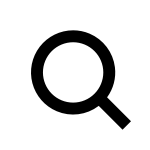The Belgian ZERO artist Jef Verheyen (1932-1984) became known as the painter of light streams and colour spectra. He experimented not only with light, but also with movement and the invisible as means to evoke natural mechanisms and to reveal universal interrelationships between human beings and the surrounding world. He used geometric principles – his passion for geometry was born out of his interest in mathematics and (Greek) philosophy – as the basis for harmony. Verheyen never gave up on traditional media and materials such as the canvas, paint, and brushes to search for the essence of our nature.
Piero Manzoni
Untitled (Achrome), 1957
Lenz Schönberg Collection, TyrolIn Milan Verheyen expands his international
network. When he exhibits at the Galleria Pater
in 1958, Piero Manzoni walks in carrying white
paintings. Their encounter further stimulates
Verheyen’s musings about monochromy and
achromy. It is during this period that he writes
his manifesto Essentialisme (Essentialism).
His theories are closely related to those of artists
such as Günther Uecker, Otto Piene, Hermann
Goepfert, Lucio Fontana and Yves Klein. The latter,
for example, initially works in achrome white
before pursuing his famous blue pigment. In letters,
Klein and Verheyen debate the invention and
objectives of monochrome and achrome painting.

